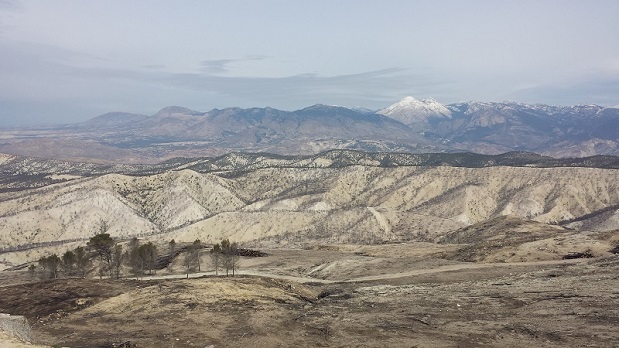
19 de September de 2016
Cambio climático y gestión de recursos naturales
The Ministry of Agriculture, Fisheries and Food has completed the restoration work on the areas affected by GIF in the provinces of Jaén, Granada and Orense.
19.09.2016
The Ministry of Agriculture, Food and Environment (MAGRAMA) has completed restoration work for the following major forest fires (GIF):
- GIF of July 7, 2015, occurred in the municipalities of Quesada, Huesa, and Cabra de Santo Cristo (Jaén), affecting a total area of 10,195 hectares. The forest area affected by the aforementioned fire amounted to 9,852 hectares. The investment made in restoration work after the major forest fire amounted to €500,000.
- A wildfire occurred on July 8, 2015, in the municipalities of Lújar, Motril, and Vélez de Benaudalla (Granada), affecting a total area of 1,986 hectares. The forest area affected by the fire amounted to 1,580 hectares. The investment in restoration work for the massive forest fire totaled €250,000.
- GIF of August 30, 2015, which spread to the municipalities of Cualedro, Baltar, and Xinzo de Limia (Orense), affecting a total area of 3,180 hectares. The forest area affected by the fire amounted to 748 hectares, representing great environmental value. The investment made in restoration work following the major forest fire amounted to €462,772.
The objectives achieved by the forest and environmental restoration efforts and complementary actions in the mountains affected by these wildfires were as follows:
- Reduce erosion risks after forest fires
- Reduce the risks of pests and diseases after the forest fire
- Restoration of a mixed forest stand that will provide different possibilities and ecological diversity in the future.
- Reconcile the various interests that society demands from the natural environment, whether these are productive, protective, social use, or biodiversity aspects.
- Harmonize social and economic interests with environmental conservation.
The actions carried out have been:
- Treatment of burnt vegetation to facilitate the regrowth of spruce branches (in the case of oaks) and to facilitate natural regeneration (in the case of conifers), including felling, mechanized logging and logging with animal traction, collection, removal, stacking and disposal of plant remains.
- Actions to combat erosion in areas with steep slopes, through the construction of levees and the adaptation of fascines with felled plant remains
- Cleaning and conditioning of trails and slopes to facilitate access for restoration work and for general forest management.
- Hydrological and forestry correction and erosion control in areas with steep slopes. Stone terraces and vegetation fascines/cords have been constructed with felled remains, ensuring the densest possible interweaving to retain debris on the slope.
- Planting of small groves of native hardwoods with the dual function of serving as a refuge for the area's fauna and contributing to the control of erosion processes.
- Infrastructure improvements and replacements to prevent further damage caused by the fire (increased runoff and erosion) and to improve drainage capacity and overall forest management. Works have been carried out, including water passages, ditch excavations, and road and slope refinements.
These projects are 53% co-financed by the EAFRD, within the framework of the corresponding National Rural Development Program. These projects, along with other similar projects to restore major forest fires carried out by the Ministry of Agriculture, Livestock and Fisheries (MAGRAMA, DGDRPF), are part of the collaborative and supportive actions offered to the Autonomous Communities in the areas of hydrological and forestry restoration and the fight against erosion and desertification.
More information: MAGRAMA-Forest Restoration l









